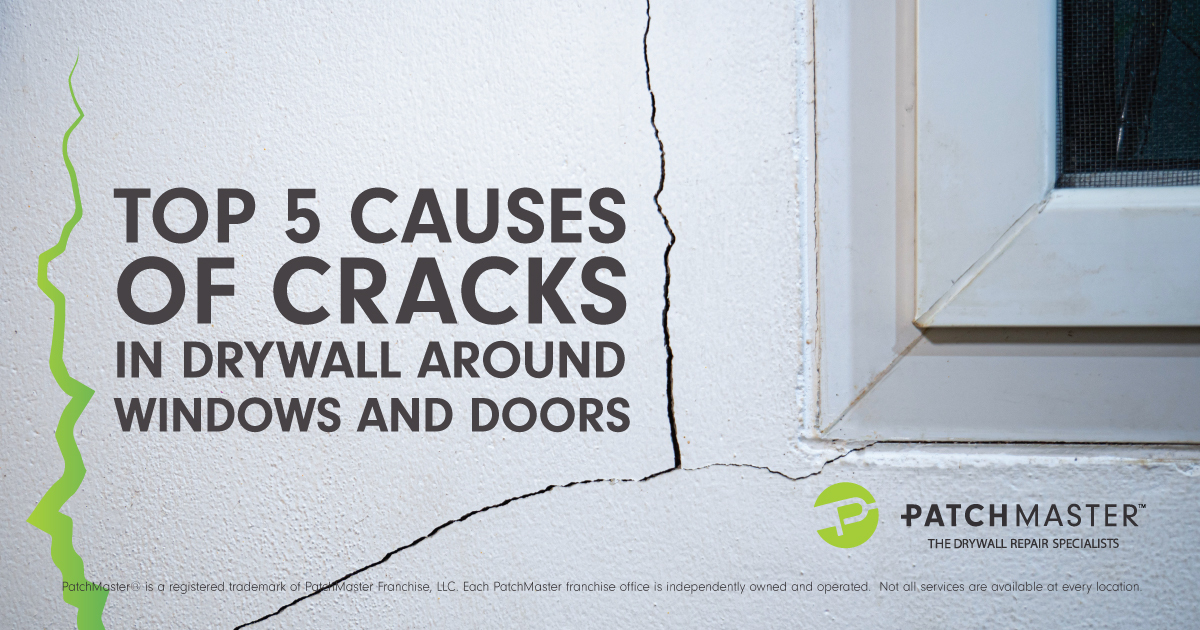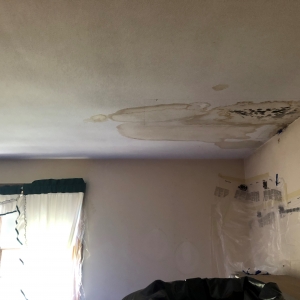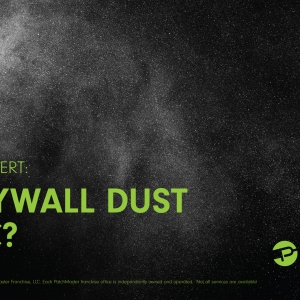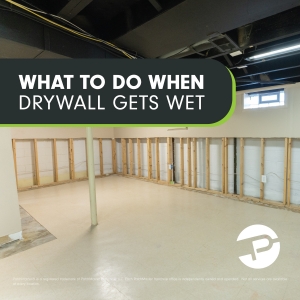In both new and old homes, cracks in the walls are fairly common and are caused by the normal settling of the house, which can be repaired quickly and cost-effectively. Sometimes, though, a crack in the wall indicates a larger issue. In this article, we will tell you how to determine if the crack is a sign of a serious issue, and what to do to make your space whole again.
What Causes Cracks in Walls?
You might have cracks in the walls if your house was recently built, cracks in walls could be the results of “new home” settling. New lumber, sometimes called "green lumber," contains a high level of moisture and tends to move slightly as it dries out, so small wall cracks are common in newly built homes, therefore waiting about a year or so to repair any cracks after your home has been completed, is highly recommended. Doing so, allows the wood to dry completely. After that, the cracked joints can be repaired without worrying that more will appear in the future.
Here are the Top Five Causes of Cracks in Drywall Around Windows and Doors
1. House Settling can Cause Cracks in Drywall
Have you noticed hairline cracks over doors and windows? This is likely due to what we call “settling” in the industry. No matter the age of your home or structure, movement and shifting over time is fairly normal. These cracks tend to occur in the weakest part of the wall. As mentioned before, cracks around door frames and windows are the most common.
To better understand this, it helps to think about how a call is constructed. A wall is built using vertical studs that run floor to ceiling. However, to install a door or a window, the builder will need to cut down studs to accommodate for that space. Although the builder adds extra framing to support the studs, these areas are still weaker than the rest of the wall. That is why these spots are the first to develop cracks when a home or structure starts to settle. While these cracks across walls and doorways do not indicate a structural problem, the drywall should be repaired and painted by a trained technician.
2. Signs of Water Damage in and Around a Crack
Whether it’s a leaky roof or window, or even an attic leak, water can soak into the wall framing and saturate the drywall, which softens and deteriorates, creating a crack with noticeable yellow or brownish stains. If the drywall is damp and soft to the touch, this is a good indication that the leak is fresh. As with any water damage, identifying where the leak is coming from and fixing that issue are the first steps you should take. Then, replacing the damaged section of drywall and then re-taping, it’s important to remediate the risk of mold and fungus.
3. Faulty Taping Could Result in Cracks in a Wall
During the installation of drywall panels, the seams between each panel is filled with drywall mud and then covered with paper tape. If the tape doesn’t have enough mud underneath to help it adhere firmly, over time it will begin to pull away from the wall - resulting in a straight line crack where the tape has lifted. If you are only experiencing a small hairline crack you can often quickly repair this by using a bit of glue and pushing the seam down for a few minutes. If you are experiencing multiple areas of lift, you may need to retape the entire area to keep this issue from occurring in the future.
4. Cracks That Could Indicate Structural Issues
Big, diagonal, or irregular cracks could indicate a larger structural issue. Jagged or diagonal cracks could mean that the foundation may have shifted or sunk, or another form of structural damage has taken place. Commonly, we see this happen when there is significant termite damage. If you are noticing cracks over a one-quarter inch, these should be addressed immediately as they could indicate a larger structural issue that may require professional assistance.
5. Unregulated Temperatures Can Cause Wall Cracks
Vacation homes and structures that are empty for months or long periods of time tend to experience cracks in the walls as these structures are not being climate controlled, as they would normally be if someone were there on a consistent basis. Fluctuations in temperature and humidity can cause framing and drywall to expand and contract, thus resulting in cracking. Like most wall cracks, these can be re-taped and painted.
Repairing Cracks in Walls
While there are many tips and tricks to drywall repair, achieving a smooth wall finish can be hard to do on your own. In addition, issues that have been caused by larger problems should always be looked at by a professional. If you have questions or concerns about your home or structure, contact PatchMaster and let our team of expert technicians make you whole again. Give us a call at 1-844-PATCH-MAN (US) or 1-833-WE-PATCH (Canada).






